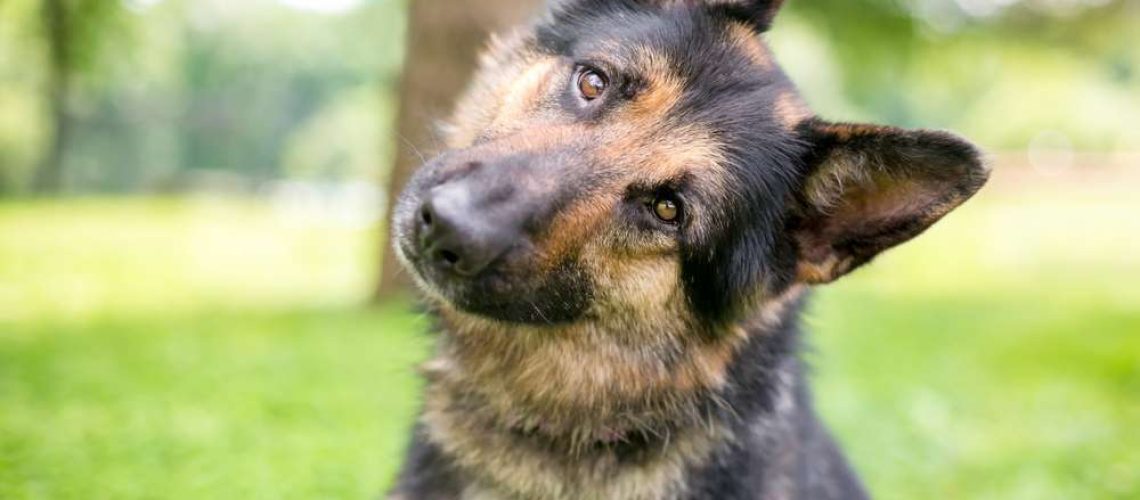Key Takeaways:
- Dogs tilt their heads to better understand and process sounds, especially those that are unfamiliar or intriguing to them.
- Head tilting in dogs is often a sign of attentiveness and curiosity, as they are trying to gather more information about their surroundings.
- The shape and position of a dog's ears may influence the frequency and extent of head tilting, as certain breeds with floppy or erect ears may tilt their heads more frequently than others.
- Some dogs may tilt their heads as a learned behavior, often mimicking their owners' reactions or attempting to elicit attention or rewards.
- In certain cases, head tilting can indicate an underlying medical issue such as ear infection or vestibular disease, so it's important to monitor any changes in your dog's behavior and consult a veterinarian if necessary.
Have you ever noticed that when you talk to your furry friend, they tilt their head to the side? It's absolutely adorable, isn't it? But have you ever wondered why they do it? Well, get ready to uncover the fascinating secret behind this cute canine behavior. Understanding why dogs tilt their heads can not only deepen your bond with your four-legged companion but also give you a glimpse into their inner world. So, let's embark on this captivating journey together and discover the surprising reasons behind this endearing gesture. Get ready to be amazed by what you're about to learn!
Why do dogs tilt their heads when we talk to them?
When we talk to our furry friends, we might notice that they often tilt their heads to one side. This adorable behavior has puzzled scientists and dog lovers alike for a long time. One possible reason why dogs tilt their heads is that it helps them hear us better. You see, dogs have very sensitive ears, and by tilting their heads, they can adjust the shape of their ear canals, allowing them to catch sounds more clearly.
Another reason why dogs tilt their heads could be that they are trying to understand us better. Dogs are incredibly perceptive animals and are always trying to pick up on cues from their human companions. By tilting their heads, they may be trying to get a better view of our facial expressions and body language, which can help them interpret our words and emotions.
The Ear Anatomy of Dogs
To understand why dogs tilt their heads, it's important to know a little bit about their ear anatomy. Dogs have long ear canals that lead from the outside into the middle and inner ear. These canals are curved in shape and contain specialized structures called ossicles that help transmit sound waves.

How Tilting Helps Dogs Hear Better
By tilting their heads, dogs can change the shape of their ear canals slightly. This adjustment allows them to capture sounds from different angles more effectively. It's like when you cup your hand behind your ear to hear something better - except dogs have built-in mechanisms that let them do this naturally!
How Tilting Helps Dogs Understand Us
Dogs are experts at reading human body language and facial expressions. When they tilt their heads, they may be trying to get a better view of our faces. This can help them pick up on subtle cues, such as the movement of our lips or the wrinkles on our foreheads, which can give them clues about what we are saying and feeling.
Common Breeds Known for Head Tilt
While dogs of all breeds and sizes can tilt their heads, some breeds are more famous for this adorable behavior. Here are a few examples:
- Basset Hound: These long-eared pups have an excellent sense of smell but also tend to tilt their heads frequently due to the shape and size of their ears.
- French Bulldog: With their adorable bat-like ears, French Bulldogs often tilt their heads when they hear something interesting or puzzling.
- Golden Retriever: These friendly and intelligent dogs are known for their head-tilting antics, which make them even more lovable!
How does tilting their heads help dogs understand us better?
Dogs have amazing communication skills, and tilting their heads is one way they try to understand us better. When a dog tilts its head while we talk to them, it's like they're saying, "I'm listening! Tell me more!" By adjusting the position of their ears, dogs can capture sounds more accurately and determine where those sounds are coming from.
Tilting also helps dogs pick up on visual cues from our faces. Dogs are experts at reading human expressions, and by tilting their heads, they get a better view of our facial features. They might focus on our eyes or mouth movements to gather information about how we feel or what we're saying.
The Role of Sound Localization
Sound localization is the process of determining the location of a sound source. By tilting their heads, dogs can fine-tune their ability to locate where sounds are coming from. This skill is particularly useful for dogs that work in search and rescue or hunting, as they need to pinpoint specific sounds in their environment.
Visual Cues and Emotional Understanding
Tilting their heads also helps dogs pick up on visual cues from our faces. Dogs are incredibly perceptive when it comes to human emotions, and they often rely on our facial expressions to understand how we're feeling. By tilting their heads, dogs can better see our eyes, eyebrows, and mouth movements, which provide valuable information about our emotional state.
Are there specific reasons why dogs tilt their heads more than other animals?
While many animals can tilt their heads to some extent, dogs seem to do it more frequently than others. There are a few reasons why this might be the case:
- Dogs have a strong bond with humans: Dogs have been living alongside humans for thousands of years and have developed a unique ability to understand us. Tilting their heads may be one way they try to connect with us and show that they are paying attention.
- Dogs have flexible ear mobility: Unlike some other animals, such as cats or horses, dogs have ears that are highly mobile. This means they can move and adjust the position of their ears more easily, allowing them to tilt their heads in different directions.
- Dogs rely heavily on auditory cues: Dogs have an exceptional sense of hearing and rely heavily on auditory information to navigate the world around them. Tilting their heads may enhance their ability to capture sounds effectively.
Can a dog's breed or size affect how often they tilt their heads?
Yes, a dog's breed and size can influence how often they tilt their heads. Some breeds are more prone to head tilting due to the shape and size of their ears. For example:
- Dogs with large, floppy ears, like Basset Hounds or Bloodhounds, may tilt their heads more frequently because their ears can obstruct their vision or create a need for better sound reception.
- Smaller dogs, such as Chihuahuas or Yorkshire Terriers, may also tilt their heads more often because their smaller size allows for easier movement and adjustment of the head position.
Breed Characteristics
Each dog breed has its own unique characteristics and traits. While head tilting can vary among individuals within a breed, certain breeds have become known for this adorable behavior:
Cocker Spaniel
Cocker Spaniels are famous for their long, droopy ears that make them irresistible to pet owners. These floppy ears can sometimes get in the way of their vision or hearing, leading them to tilt their heads to compensate.
Pug
Pugs are small dogs with big personalities. They have round faces and large eyes that make head tilting even more endearing. Pugs might tilt their heads out of curiosity or to better understand what you're saying.
German Shepherd
German Shepherds are intelligent and highly trainable dogs. They often tilt their heads while listening attentively to commands from their owners. Their erect ears allow them to capture sounds effectively but may still lead to occasional head tilting.
Do scientists know exactly why dogs tilt their heads, or is it still a mystery?
While scientists have made progress in understanding why dogs tilt their heads, the exact reason behind this behavior is not yet fully understood. It remains a fascinating topic of study for researchers who are intrigued by canine behavior.
Several theories have been proposed to explain why dogs tilt their heads, but more research is needed to confirm these hypotheses. Scientists continue to investigate the role of auditory and visual cues in head tilting and how it relates to dogs' ability to understand human communication.
Ongoing Research
Scientists conduct various experiments and studies to unravel the mystery of why dogs tilt their heads. These studies involve observing dog behavior, measuring brain activity, and analyzing responses to different sounds and visual stimuli.
Brain Imaging Studies
Researchers use advanced imaging techniques like functional magnetic resonance imaging (fMRI) to study dogs' brains while they tilt their heads. This helps identify which areas of the brain are involved in processing auditory and visual information during head tilting.
Behavioral Observations
Scientists also closely observe dog behavior in natural settings or controlled environments. They look for patterns in head tilting frequency, associated body language, and responses to specific cues or commands from humans.
Are there any health issues that could cause a dog to tilt its head frequently?
In some cases, frequent head tilting in dogs may be a sign of underlying health issues. If you notice your dog tilting its head excessively or displaying other concerning symptoms, it's essential to consult with a veterinarian for proper evaluation and diagnosis.
Here are a few potential health conditions that can cause frequent head tilting:
Vestibular Disease
The vestibular system helps animals maintain balance and spatial orientation. If this system becomes disrupted due to infection, inflammation, or other issues, it can cause a dog to tilt its head frequently. Other symptoms may include loss of balance, stumbling, and abnormal eye movements.
Ear Infections
Ear infections are a common problem in dogs, especially those with floppy ears or excessive hair in their ear canals. These infections can cause discomfort and lead to head tilting as the dog tries to alleviate the pain or itching.
Injury or Trauma
A head injury or trauma to the neck area can result in frequent head tilting as a response to pain or neurological damage. If your dog has recently experienced an accident or injury, it's important to seek veterinary attention promptly.
What are some common theories or explanations for why dogs tilt their heads?
While the exact reason behind why dogs tilt their heads is still not fully understood, several theories have been proposed by experts:
To Improve Sound Localization
One theory suggests that dogs tilt their heads to better localize sounds. By adjusting the position of their ears, they can determine where a sound is coming from more accurately.
The Cone of Confusion
The "cone of confusion" refers to an area around the head where sounds arrive at both ears simultaneously and make it challenging for animals to pinpoint the source accurately. Tilting their heads may help dogs reduce this confusion and enhance sound localization abilities.
To Enhance Visual Cues
Another theory proposes that dogs tilt their heads to improve their view of our faces. By tilting their heads, they get a better look at our facial expressions and lip movements, which helps them understand us better.
Prominent Muzzle Theory
The "prominent muzzle" theory suggests that dogs with longer muzzles may tilt their heads more often because their noses obstruct their view. By tilting, they can see around their nose and focus on our faces more effectively.
Curiosity and Attention
Some experts believe that dogs tilt their heads out of curiosity or to show attentiveness. They are naturally inquisitive animals and might tilt their heads to gather more information about a particular sound or situation.
Human Connection
Dogs have a strong bond with humans, and head tilting may be a way for them to connect with us. By tilting their heads, they engage in a behavior that often elicits positive reactions from humans, reinforcing the bond between dog and owner.
Overall, while the exact reasons behind why dogs tilt their heads are not yet fully understood, it is clear that this behavior serves a purpose in helping them hear better and understand human communication more effectively.
In conclusion, dogs tilt their heads to better understand and communicate with humans. This adorable behavior allows them to focus on sounds and expressions, showing their curiosity and desire to connect with us.
Are dogs that tilt their head smart?
Researchers have discovered that dogs tilting their heads is not only a cute behavior but also a sign of their intelligence. This head tilting happens when dogs are processing important and meaningful information.
What dog breeds tilt their heads?
In his initial research, the scientist found that dogs with longer snouts, like greyhounds, were more prone to tilting their heads than breeds with flatter faces, such as pugs. However, he also observed that over half of the flat-faced breeds still exhibited head tilting, indicating that there is much more to discover in this area.
Why do dogs tilt their heads and wag their tails?
According to Dr. Ragen McGowan, a scientist specializing in animal behavior at Purina, dogs frequently tilt their heads when they hear a familiar word or a new sound. McGowan explains that this head tilting may be a way for dogs to better focus on and locate sounds.
Why does my dog tilt his head when he sees me?
Dogs tilt their heads in order to compensate for their obstructed muzzles and enhance their visual perspective. This adorable head tilt actually expands their field of vision, enabling them to better perceive a person's face. By seeing our facial expressions, communication is improved.
Why do dogs stare at you?
Similar to how humans gaze into the eyes of someone they love, dogs will look at their owners as a way to show affection. This act of mutual staring releases oxytocin, also known as the "love hormone," which helps strengthen the bond between humans and dogs and increases feelings of love and trust.
Why do dogs look at you sideways?
When a dog displays a whale eye, it typically means that they are about to become aggressive. This could be because they are protecting something like a bone or a toy, or they feel threatened. In any case, your dog is clearly setting a firm boundary.

















